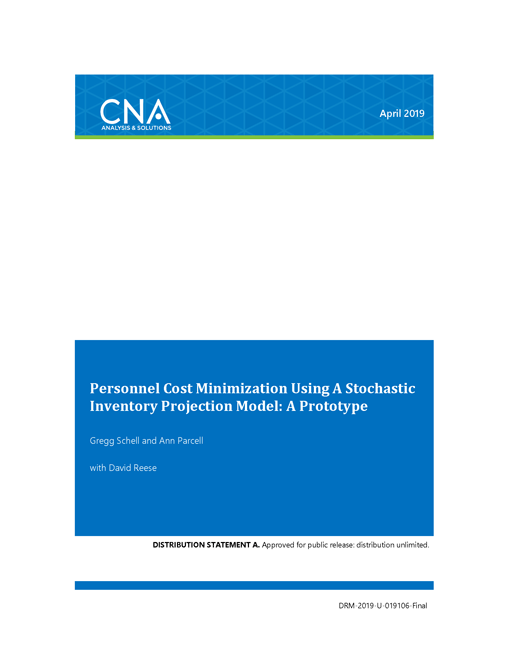In the past 30 years, the female share of enlisted accessions has increased to about 25 percent. Moreover, the Navy opened most skill specialties to women in 1994, and it opened the remaining few specialties in the last several years. On average, across all skill specialties, women have lower continuation rates than men, although the gender difference in rates varies by skill specialty (enlisted management community (EMC)) and across the years-of-service (YOS) profile. As the female share of accessions increases and is distributed across skill specialties, the Navy may have to consider a range of accession and retention strategies to fill requirements efficiently. Possible strategies include increasing accessions, increasing retention bonuses (e.g., selective reenlistment bonuses (SRBs)), or some combination of the two. To fill requirements as efficiently as possible, the Navy should choose a joint accession/retention strategy that minimizes personnel costs.
To our knowledge, the Navy does not have a model to aid in determining the costminimizing accession-SRB plan for a desired requirement fill rate and desired female share of accessions. Although some previous analyses have shown accession-retention personnel cost trade-offs at the aggregate level, we do not know of any model that finds joint cost-minimizing accession-SRB choices by EMC, particularly as the female share of accessions changes. One result is that there may be a tendency to increase the number of accessions as the default response to an increase in the female share of accessions. Yet personnel costs may not be minimized by increasing accessions only, and the optimal solution likely varies by EMC. In this report, we build a prototype model to find cost-minimizing accession-SRB solutions to fill requirements when the female share of accessions is changed. Specifically, we built a stochastic inventory projection model (SIPM) that simulates the movement of every male and female sailor from accession through his or her Navy career for each of five EMCs. The model is stochastic because each sailor’s career progression is dependent on probabilities for annual continuation (vice loss), and advancement.
To set the baseline inventory simulation, we use recent billets authorized (BA) by paygrade for each EMC as the benchmark for requirements, and we use recent accessions and inventory to initialize the simulation. In addition, we base our stochastic treatment of sailor career progression on recent historical rates for continuation and advancement.
Our model includes three types of personnel costs: recruiting (including enlistment bonuses (EBs)), sailor compensation (less EBs and SRBs), and SRBs. For recruiting costs, we use a simple cost structure in which the cost of accessions varies directly with the test scores required for the promise of an EMC and includes an estimate of recruiting effort, advertising costs, and EBs. For sailor compensation, we apply the annual Department of Defense (DOD) composite rates for the Navy by paygrade to each sailor in inventory, from which we subtract the EB and SRB amounts. Then we use recent SRB levels as the baseline cost of SRBs by EMC and allow the SRB levels to fluctuate in the cost minimization procedure. We assume that the retention rate response to a onelevel increase in SRB can vary by EMC and follows results based on previous CNA research.
Our modeling and optimization approach proceeds in two stages. First, we employ the grid randomized iterative descent (GRID) search technique for each of five EMCs to find optimal accession and SRB plans. The optimal plan minimizes total personnel cost while satisfying fill requirements for a desired female share of accessions. We measure fill by the inventory-to-BA ratio (INV/BA) by paygrade for each year of the simulation. The model also calculates the average YOS by paygrade for each year of the simulation to monitor changes in average experience levels across the inventory. In the second stage, we use another cost minimization routine (i.e., a bi-level search) to find the costminimizing distribution of female accessions across all five EMCs when total accessions and the total SRB budget are constrained.
Download reportDISTRIBUTION STATEMENT A. Approved for public release: distribution unlimited. Public Release. 4/17/2019
Details
- Pages: 58
- Document Number: DRM-2019-U-019106-Final
- Publication Date: 4/17/2019
